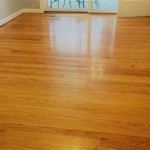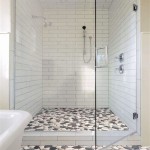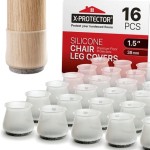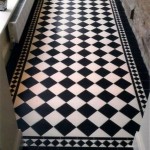Free Basic Floor Plan Maker: A Guide to Design Tools
Creating a floor plan is often the initial step in any architectural or interior design project. Whether planning a home renovation, rearranging furniture, or designing a new building, a well-executed floor plan serves as a critical visual blueprint. Numerous software options cater to this need, ranging from complex professional-grade CAD (Computer-Aided Design) programs to simpler, user-friendly applications. Fortunately, several free basic floor plan makers are available, providing essential tools for creating drafts and initial designs without requiring a financial investment. These free resources democratize the design process, allowing individuals with varying levels of expertise to visualize and refine their spatial ideas.
This article aims to explore the landscape of free basic floor plan makers, highlighting their features, functionalities, and potential uses. It will investigate the different tools available, focusing on their strengths and weaknesses, and guide users in selecting the most suitable option for their specific needs. By understanding the capabilities of these free resources, users can effectively plan and visualize their space without incurring significant costs.
Key Point 1: Understanding the Functionality of Free Floor Plan Makers
Free floor plan makers generally offer a core set of functionalities that allow users to create basic layouts. These functionalities often include the ability to draw walls, insert doors and windows, add furniture, and label rooms. While the sophistication and breadth of these features can vary between different software options, the underlying principles remain consistent.
One fundamental feature is the wall drawing tool. This allows users to define the perimeter of the building and create interior walls, defining the overall structure of the floor plan. Precision is often achieved through inputting specific dimensions for wall lengths and thicknesses. Some programs offer the ability to automatically adjust the wall thickness based on predefined standards or custom specifications. Furthermore, walls must connect seamlessly to create enclosed spaces, requiring users to understand the software’s connection mechanisms. This feature is often the backbone of any floor plan application, allowing the user to precisely map out the space.
Door and window insertion is another critical function. These elements are essential for defining access points and natural light sources within the design. Most free floor plan makers provide a library of pre-designed door and window styles, which can be easily inserted into the walls. Users can typically adjust the size, location, and swing direction of these elements to accurately reflect the intended design. The placement of doors and windows is critical for understanding the flow of traffic through the space and the natural lighting conditions, making this feature indispensable.
Furniture placement plays a crucial role in visualizing the functionality of the space. Free floor plan makers typically offer a library of generic furniture models, including sofas, tables, beds, and appliances. Users can drag and drop these models into the floor plan, arranging them to simulate the intended layout. While the level of detail and realism in these models may be limited compared to paid software, they provide a valuable tool for understanding spatial relationships and identifying potential layout issues. The ability to experiment with different furniture arrangements can significantly impact the final design.
Labeling rooms is essential for clarity and communication. Most free floor plan makers allow users to add text labels to identify the function of each room, such as "Living Room," "Bedroom," or "Kitchen." This helps to clearly communicate the intended use of each space and ensures that the floor plan is easily understandable by others. Some programs also offer the ability to add dimensions and annotations to the floor plan, providing further detail and accuracy.
Finally, basic floor plan makers often provide output options. While advanced programs allow for varied formats, free versions often allow export as a PDF, PNG, or JPEG. This allows for easy sharing and printing. Some may also offer the capability to print to specific scales which could prove invaluable.
Key Point 2: Exploring Specific Free Floor Plan Maker Options
Several free floor plan makers are available, each with its own set of features and functionalities. Understanding the differences between these options can help users choose the most suitable tool for their needs. Some popular choices include web-based platforms and downloadable software.
One of the most widely used free floor plan makers is Floorplanner. This web-based platform offers a user-friendly interface and a comprehensive set of features. Users can easily draw walls, insert doors and windows, and add furniture from a large library of models. Floorplanner also offers 2D and 3D viewing options, allowing users to visualize their design in different perspectives. The free version of Floorplanner has some limitations, such as a limited number of projects and features, but it provides a solid foundation for creating basic floor plans. Its accessibility through a web browser is a significant advantage.
Another popular option is Planner 5D. This platform offers both web-based and mobile app versions, making it accessible on various devices. Planner 5D focuses on creating visually appealing 3D renderings of floor plans. It offers a wide range of furniture and decor items, allowing users to create realistic and detailed designs. The free version of Planner 5D has some limitations, such as watermarks on exported images, but it provides a powerful tool for visualizing interior spaces. The focus on aesthetics makes it a good option for design-oriented projects.
RoomSketcher is another web-based floor plan maker that offers a range of features for creating basic layouts. It allows users to draw walls, insert doors and windows, and add furniture from a library of models. RoomSketcher also offers 3D viewing options and the ability to create virtual tours of the floor plan. The free version of RoomSketcher has some limitations, such as a limited number of projects and features, but it provides a user-friendly and intuitive interface for creating floor plans. The virtual tour functionality is a unique and useful feature.
Sweet Home 3D is a downloadable software program that offers a comprehensive set of features for creating floor plans. It allows users to draw walls, insert doors and windows, and add furniture from a large library of models. Sweet Home 3D also offers 3D viewing options and the ability to create photo-realistic renderings of the floor plan. This software is open-source, making it a free and customizable option for creating floor plans. The open-source nature allows for community-driven improvements and expansions.
Magicplan is a mobile app that leverages augmented reality (AR) technology to create floor plans. Users can simply walk around a room and use their smartphone or tablet to scan the space. Magicplan automatically generates a floor plan based on the scanned data. This app is a convenient and efficient way to create floor plans of existing spaces. While the free version may have limitations on the number of plans, its AR capability is truly innovative.
SketchUp Free is a web-based version of the popular 3D modeling software. While it is not specifically designed for floor plans, it can be used to create detailed 2D and 3D representations of buildings. SketchUp Free offers a wide range of tools for drawing, modeling, and texturing, allowing users to create highly detailed and realistic designs. However, it requires a steeper learning curve than other basic floor plan makers. The power and versatility make it a good choice for more advanced users.
Key Point 3: Considerations When Choosing a Free Floor Plan Maker
Selecting the right free floor plan maker depends on the specific needs and requirements of the project. Several factors should be considered when evaluating different options. These include ease of use, features and functionalities, output options, and compatibility.
Ease of use is a crucial factor, especially for users with limited experience in design software. The interface should be intuitive and easy to navigate, with clear instructions and helpful tutorials. A complicated or confusing interface can be a significant barrier to entry, making it difficult to create even basic floor plans. A simple drag-and-drop interface with clear icons and labels is often preferable.
The available features and functionalities should align with the specific requirements of the project. If the project requires detailed 3D renderings, a floor plan maker with advanced visualization capabilities is essential. If the project focuses on basic layout planning, a simpler tool with essential features may be sufficient. Consider the need for specific features such as dimensioning, annotation, or virtual tours.
The output options should support the desired format for sharing and printing the floor plan. Most free floor plan makers offer basic output options such as PDF, PNG, or JPEG. However, some may offer more advanced output options such as DWG or DXF, which are compatible with professional CAD software. The ability to export in a suitable format is crucial for collaboration and further development of the design.
Compatibility with different devices and operating systems should also be considered. Some free floor plan makers are web-based and can be accessed from any device with an internet connection. Others are downloadable software programs that require specific operating systems. Choose a floor plan maker that is compatible with the devices you plan to use for creating and viewing the floor plan. This ensures accessibility and convenience.
It is also important to research user reviews and testimonials before choosing a free floor plan maker. This can provide valuable insights into the strengths and weaknesses of different options. Look for feedback on ease of use, reliability, and customer support. User reviews can help you make an informed decision and avoid potential pitfalls. Check online forums and communities for discussions about different floor plan makers.
Finally, consider the long-term scalability of the chosen tool. While a free floor plan maker may be sufficient for basic projects, it may not be adequate for more complex or professional designs. If you anticipate needing more advanced features in the future, consider choosing a floor plan maker that offers paid upgrades or a seamless transition to a more comprehensive software solution. This ensures that your skills and knowledge can be leveraged as your projects become more demanding.

Free Floor Plan Creator Design 2d 3d Layouts Easily

Free Floor Plan Designer

Blueprint Maker Free Online App

How To Make Floor Plans For Free In Sketchup

Free Online Floor Plan Creator Edrawmax

Free 2d Floor Plan Maker

Free Floor Plan Designer

Best Free Floor Plan Software Exhaustive List Archiplain

Free Floor Plan Creator Design 2d 3d Layouts Easily

Beginners Guide To Drawing A Floor Plan With Free Software







